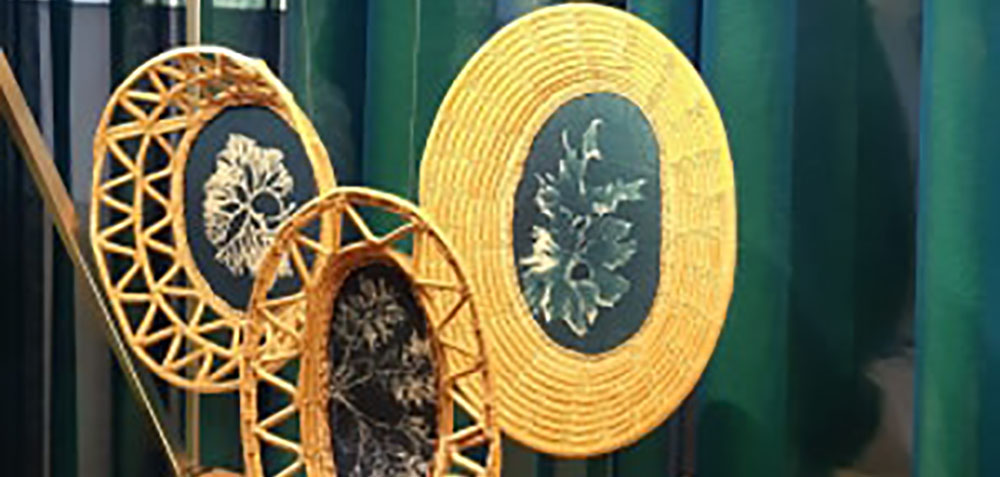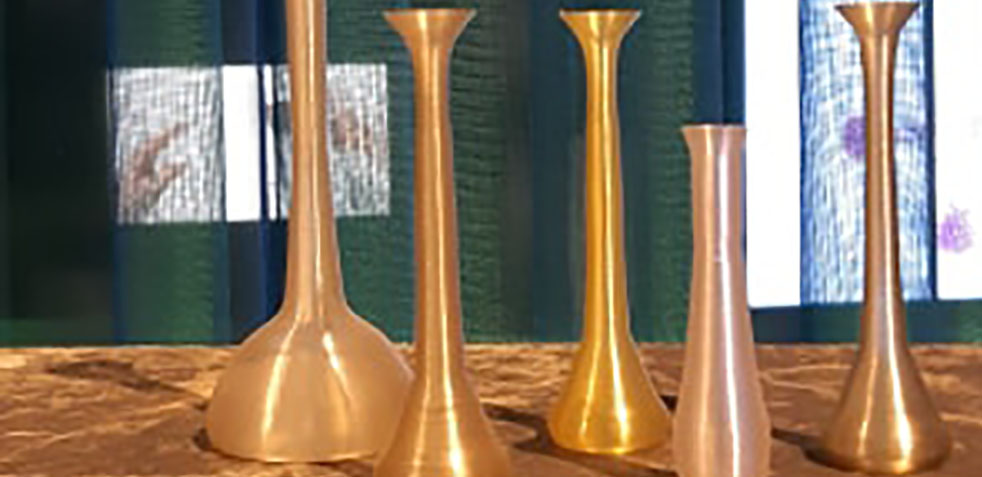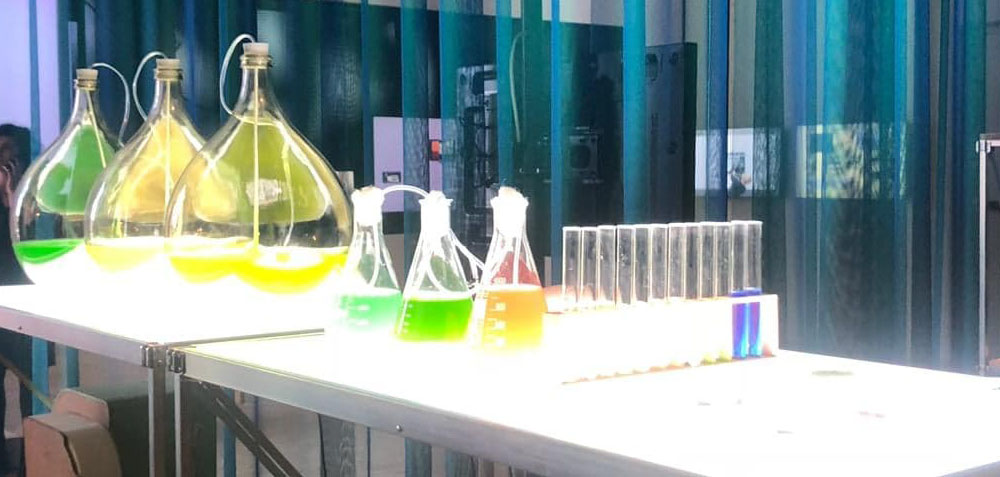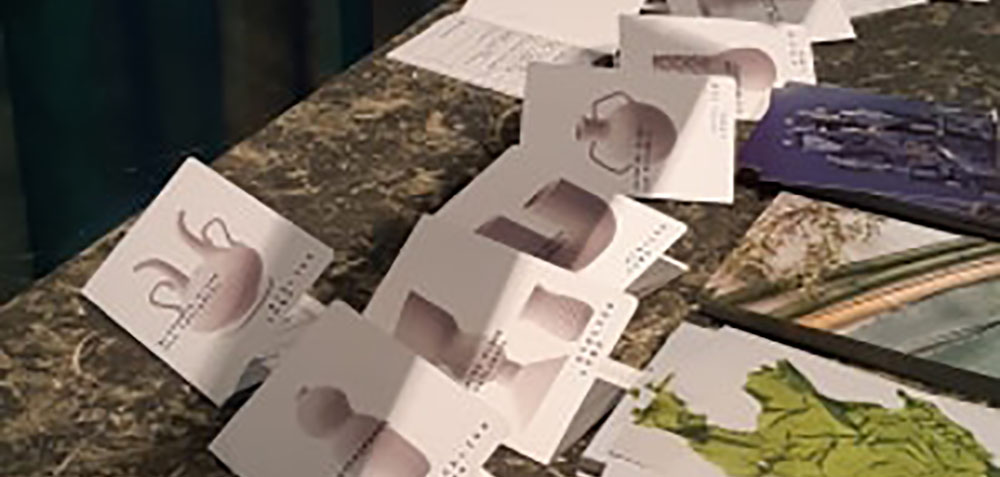THE ART OF WEAVING FROM SAN VERO MILIS TO "TRIENNALE DI MILANO" From March 1 to September 1, 2019, the traditional San Vero Milis artifacts, revisited according to the new suggestions of contemporary design, are present at the exhibition "Broken Nature" of the Triennale di Milano - an artistic investigation on the link between man and the environment, which over the years has often been compromised - hosted in one of the top international cultural institutions. IN MILAN WITH THE ARTISANS OF THE WEAVING. It took a month of work and meetings between craftsmen and designers to create the prototypes to be exhibited at the XXII International Exhibition of the "Triennale di Milano": baskets whose fabric inserts have been colored with algae pigments, coatings for bottles, containers made with the technique of interweaving male olive trees and reeds, artifacts intertwined with the twig.
MEDSEA AND THE SAN VERO'S ART OF WEAVING. The initiative is the result of the MEDSEA Foundation's project "IS FAINAS co-op", launched in San Vero Milis with the collaboration of the local administration and aimed at enhancing the art of weaving. The aim is to promote the training of new craftsmen and, through the establishment of a cooperative, transform an activity that struggles to survive into professional opportunities. The LUMA Foundation's contribution is intended to direct operators in the area towards the new frontiers of design. Last January Henriette Waal, director of the Atelier Luma based in Arles, and the designer Ines Bressand visited San Vero and the artisan workshops, together with the MEDSEA team and the local administrators, for the first "experiment" of collaboration between the artisans of San Vero and an international designer. Teamwork led to the creation of prototypes for the Triennale in Milan and to a video that tells the story of the community of San Vero and its tradition of weaving. The initiative, which MEDSEA is developing together with Luma, is part of the wider context of the Maristanis project for the protection and sustainable development of wetlands, expressed in its possible artistic expressions.
THE PROTAGONISTS. Elisabetta, Francesca and Giovanna work on twigs, baskets and corbels. Annarita, on the other hand, is an expert in the coating of bottles, while Gianni deals with more traditionally masculine weaving. They use marsh grasses on the spiral-wrapped warp or arranged in the shape of a cross (made up of cyperus for the baskets and the more resistant reed for corbels and baskets). In the baskets, of different shapes depending on their intended use, drawings are made with the interweaving of coloured straw mainly in red, black, blue or green. Typical of San Vero Milis, finally, is the use of the weave to cover objects such as bottles, glasses and other containers. With the indications of the Luma designers, the craftsmen worked on new projects and the prototypes in which the art of weaving is combined with design and biology through 3D printing techniques, created in collaboration with Maurizio Naletto, and the use of biopolymers and coloured pigments extracted from algae.
THE FRAME OF REFERENCE. The presence of the art of weaving at the Triennale is an initiative that develops within the transnational platform "Algae Geographies", launched by the LUMA Foundation with the collaboration - for Sardinia - of the MEDSEA Foundation. At the heart of the project is the search for new values for wetlands as incubators of locally grown biomaterials. "Algae Geographies" draws on the unexplored connections between local biomaterials and the users, producers and production methods associated with them. Combining design and biology, the platform proposes
new models for circular production through organic and decentralized manufacturing. At the same time, it becomes an aggregator of knowledge, studying the variety of local and renewable resources in the wetlands of the Mediterranean and connecting with farmers and local algal institutes.
"BROKEN NATURE": THE EXHIBITION. The exhibits show the wide range of explorations allowed by the research platform: domestic objects in microalgae and biopolymers printed in 3D; textiles dyed and printed with algae pigments; biolamines with algae and starch-based polymers; hybrid baskets that combine printing and hand weaving in 3D and hand-woven objects with wetland fibres including algae. They draw on the cultural archives of the different places where they were produced - Arles, Cairo, Istanbul, Sardinia - and challenge the preconceptions with which we evaluate the materials and production techniques. ARTIFACTS THAT DIALOGUE IN THE EXHIBITION. The exhibition includes a selection of about one hundred projects from the last three decades, examples of world-class design, architecture and reconstitutive art. Among them, "Broken Nature" hosts milestones such as the Hippo Roller by Pettie Petzer and Johan Jonker, the residential project Quinta Monroy by Elemental, the 100 chairs in 100 days by Martino Gamper, and Eyewriter low-cost by Zach Lieberman (and others), an open source system.
THE MEDSEA FOUNDATION. The Mediterranean Sea and Coast Foundation (MEDSEA) is a non-profit organisation created by public act on 8 May 2015 in Cagliari. The original idea of the Foundation was born from a group of people involved in the process of sustainable development of the Mediterranean for over 15 years. MEDSEA has as its objective the protection of marine areas and coastal ecosystems and the conservation of cultural heritage, according to the principles of sustainable development, Ecosystem Based Approach and Integrated Coastal Zone Management of the Barcelona Convention.
THE LUMA FOUNDATION. LUMA Foundation is a non-profit organization founded in 2004 with headquarters in Zurich. It supports the activities of independent contemporary artists and other pioneers working in the fields of art, photography, publishing, documentary and multimedia. LUMA promotes artistic projects with a particular interest in the environment, human rights and culture.
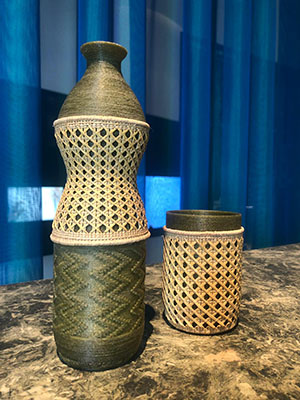
The weave of the reed created by Annarita Spanu blends with the 3D printing of the bottles printed in Sardinia by the 3D modelling and printing expert 3D Maurizio Naletto, using a filament of bioplastic obtained from algae produced by Atelier Luma. Design and pattern of the Atelier Luma.
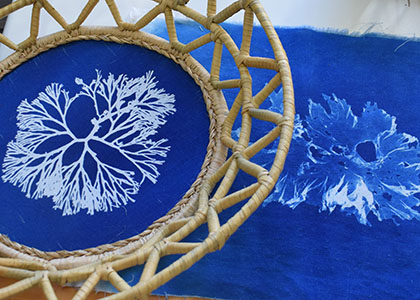
One of the projects developed by the collaboration between Is Fainas, Atelier LUMA and MEDSEA in which the weaving of the basket - made by Giovanna Palmas - is developed around a fabric colored through the historical technique of cyanotype and the imprinted images are of algae that inhabit the wetlands.

